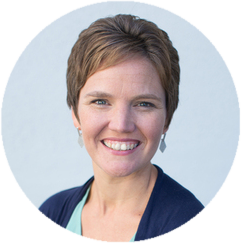 Sponsored by Fit for Profit
Sponsored by Fit for Profit
By Shannon Simmons, Special FBA Contributor
We were all reminded last year that so many factors are out of our control in business. And hopefully, we were also reminded that there are ways to mitigate some of those factors so that we can weather the storm...or pandemic.
One of the most important parts of managing a business is making sure there is enough cash to keep the business going. As a business owner, you probably have a very good idea of how much cash you have in the bank at any time. The smaller your business is, the more likely you are to keep a close eye on that cash.
Checking your bank balances is a daily function you should be on top of. Yet there is another, often-overlooked, responsibility that many business owners don’t spend enough time on. And that is managing your future cash, especially in light of unplanned situations. Looking ahead helps reduce your business risk and allows you more time to correct any upcoming dip in your cash balance.
Having enough cash is akin to having a safety net for your business. It can sometimes even mean the difference between staying in business and going out of business. To plan how much you might need for your safety net, you can use a few different methodologies.
Prepare for Worst Case
One way to plan your safety net is to prepare for the worst-case scenario. How long would your cash hold out if no revenue were to come in but all expenses kept going out? Some questions you might ask:
- At what point will your cash run out? How many weeks or months of cash do you have? For the purpose of preparing for a disaster, you can and should consider both your operating expense balance AND your profit, or rainy day vault, balances.
- Do you have a line of credit you can tap at a bank?
- Do you have other loans or sources of cash that you can tap quickly in case of emergency?
- What expenses could you shut down without hurting your business if you had to?
Accumulate a Vault
Another way to plan your safety net is to do what is recommended by the Profit First methodology: accumulate the amount of cash you need for two to three months’ worth of operations expenses and keep it on hand in your Vault account. Alternately, you can make a plan to liquidate that much cash on a very fast basis and only put your plan in place if it’s needed. An easy way to get these numbers is to look at your bank statements in conjunction with your average monthly revenue and monthly expenses.
The great thing about using Profit First in your business is that it naturally allows you to build up that Vault account slowly over time. There’s clear psychology behind it, ensuring that you really don’t feel the pinch as you save a bit each month.
Once you have a safety net in place, you’ll gain peace of mind for your business. It’s one step in an overall disaster preparedness plan that you can make for your business.
Shannon Simmons is a Certified Profit First Professional and Certified QuickBooks Pro Advisor, specializing in working with fitness and wellness businesses. Her practice, Fit For Profit, helps small business owners grow financially healthy and personally fulfilling businesses.


Join the Conversation!